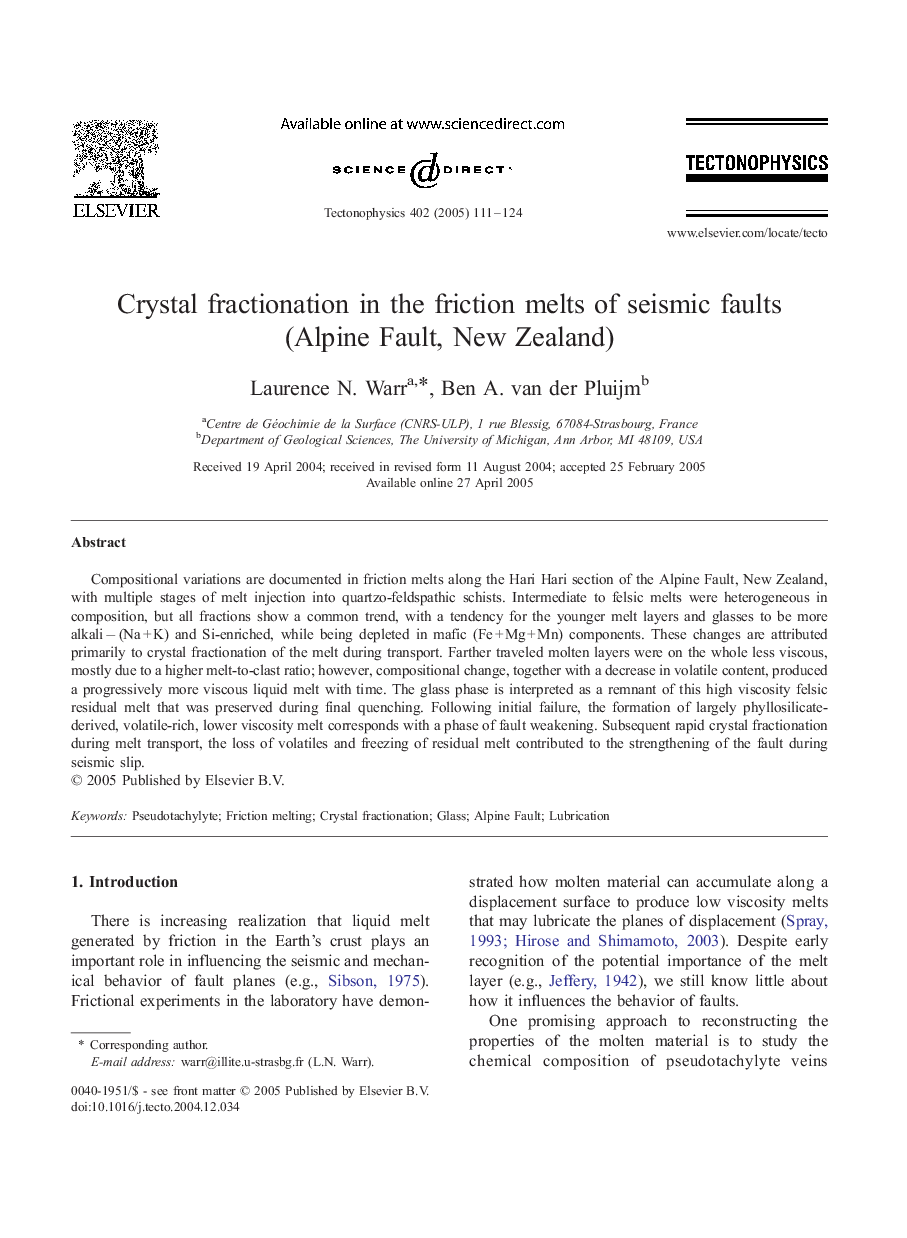| Article ID | Journal | Published Year | Pages | File Type |
|---|---|---|---|---|
| 9526978 | Tectonophysics | 2005 | 14 Pages |
Abstract
Compositional variations are documented in friction melts along the Hari Hari section of the Alpine Fault, New Zealand, with multiple stages of melt injection into quartzo-feldspathic schists. Intermediate to felsic melts were heterogeneous in composition, but all fractions show a common trend, with a tendency for the younger melt layers and glasses to be more alkali â (Na + K) and Si-enriched, while being depleted in mafic (Fe + Mg + Mn) components. These changes are attributed primarily to crystal fractionation of the melt during transport. Farther traveled molten layers were on the whole less viscous, mostly due to a higher melt-to-clast ratio; however, compositional change, together with a decrease in volatile content, produced a progressively more viscous liquid melt with time. The glass phase is interpreted as a remnant of this high viscosity felsic residual melt that was preserved during final quenching. Following initial failure, the formation of largely phyllosilicate-derived, volatile-rich, lower viscosity melt corresponds with a phase of fault weakening. Subsequent rapid crystal fractionation during melt transport, the loss of volatiles and freezing of residual melt contributed to the strengthening of the fault during seismic slip.
Related Topics
Physical Sciences and Engineering
Earth and Planetary Sciences
Earth-Surface Processes
Authors
Laurence N. Warr, Ben A. van der Pluijm,
